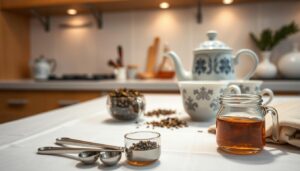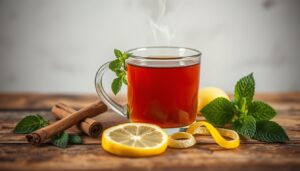Advertisements
Baking bread at home has become a phenomenon of well-being, creativity, and self-sufficiency.
Kneading, fermenting, and baking awaken the senses—the scent of rising dough, the crunch of freshly baked crust, the soft texture of the crumb—and, at the same time, demand scientific precision.
Advertisements
A few extra grams of water, too short a rest period, or baking without steam are enough to turn a spongy loaf into a dense, cakey bread.
Today, mobile apps have bridged the gap between a craftsman's intuition and the rigor of the laboratory: they accurately calculate proportions, notify you when to fold the dough, and offer video tutorials for each technique. In this extensive guide (more than 2,200 words), you'll discover why it's worth using a application to make the perfect bread, how to choose the ideal tool, and how Bread Boss, DoughLab, and Kitchen Stories can turn your kitchen into a small, professional workshop.
Advertisements
See also
- How to Make the Perfect Tea at Home: An Easy Guide
- Your partner will thank you: fortifying tea, a special touch
- The Health Benefits of Black Tea You Should Know
- Benefits of Natural Energizing Tea for You
- Health Benefits of Tea
The science and art of home baking
Breadmaking combines biochemical processes—fermentation, starch gelatinization, protein coagulation—with manual actions such as kneading and shaping. When flour hydrates, it releases glutenin and gliadin: two proteins that, when intertwined, create the gluten network. The yeast (or sourdough starter) feeds on the sugars in starch and produces carbon dioxide, inflating this elastic network. At the same time, microorganisms generate organic acids that add flavor and prolong shelf life.
Controlling time, temperature, and hydration is crucial: a dough with 65% water content will be firm and easy to handle, while one with 80% water content ("high hydration" bread) will have a honeycombed crumb but will require frequent folding to strengthen the gluten. This is where technology comes in handy: apps adjust each parameter according to your goals and even take into account the ambient humidity in your city.
Advantages of baking with the help of an app
Precision without complications
The apps convert traditional recipes into exact "baker's percentage" formulas. You enter the amount of flour, and the app immediately calculates how much water, salt, and yeast you need, avoiding confusion between grams, cups, and tablespoons.
Interactive timelines
Instead of anxiously watching the clock, you receive alerts for autolysis, folding, rounding, and oven preheating. You can even postpone a step if something unexpected comes up: the app adapts the timings to slow down cold fermentation.
Photographic and note taking record
Each batch is archived with the date, temperature, photos of the dough, and comments. By reviewing the history, you discover patterns that explain why a crust turned out pale or a crumb developed tunnels.
Community and collaborative learning
Many apps integrate forums where bakers from around the world share experiences, compare hydration levels, and post regional variations such as Argentine country bread or Baltic rye loaf.
Access to advanced techniques
From rolling croissant dough to the coil fold method for highly hydrated doughs, apps combine slow-motion videos and interactive graphics that make it easy to master complex gestures.




